Maruti Suzuki kicked-off the Auto Expo 2020 with the world premiere of Futuro-e concept. The Futuro e is the most dynamic concept to have arrived from the company and has been designed by Maruti Suzuki’s in-house team.
Maruti’s past Auto Expo concepts have been stunning and examples of the ever-improving design capabilities of Indian automotive designers. However production models that follow a couple of years later are plain and jaded compared to their forerunners to meet production cost targets and play it safe to please everyone.
We sat down with CV Raman, senior executive director at Maruti Suzuki, and asked him that unlike in the past would more of the Futuro-e concept’s design be preserved on production models to follow:
When we are making a showcar, we allow the designers to expand their vision and capability. From the very minimalistic design at the front, light guide that goes from the centre (‘S’ mark) to the sides or the diagonal sculpted side face or the very edgy design at the rear, we believe that these are the design language of the future, and we can pickup cues for future use on production Maruti models.
Yes when we are looking at using these cues on production, we will try to come maximum to this level. But sometimes there are (cost) constraints.
When asked if Maruti had more reason now to put a bold design formula into production given how the competition is revolutionizing the SUV segments with radically different design and premium features, he said:
From an overall proportion perspective, we believe that a coupe-style SUV is a possible design language for the future.
The Futuro e is immediately attractive thanks to the coupe-SUV profile. It’s a fully electric SUV and is being referred to as an Indian car with global sensibilities. The concept gets slim LED headlamps with DRLs that covers the width of the car. The rising shoulder line with a sharp rake of the windscreen lead to a sporty silhouette with big wheel arches and connected LED tail lamps. Other highlights of the concept include rear view cameras in place mirrors and sunroof. Inside, the dashboard gets a futuristic layout with a wide screen display that covers the entire dashboard region next to the steering wheel.
The production version, though not confirmed at this point by Maruti, will receive the 1.5L petrol engine to compete with the Hyundai Creta and the Kia Seltos, positioned above the Maruti Vitara Brezza. The platform is also ready to be equipped with an electric or a hybrid powertrain.
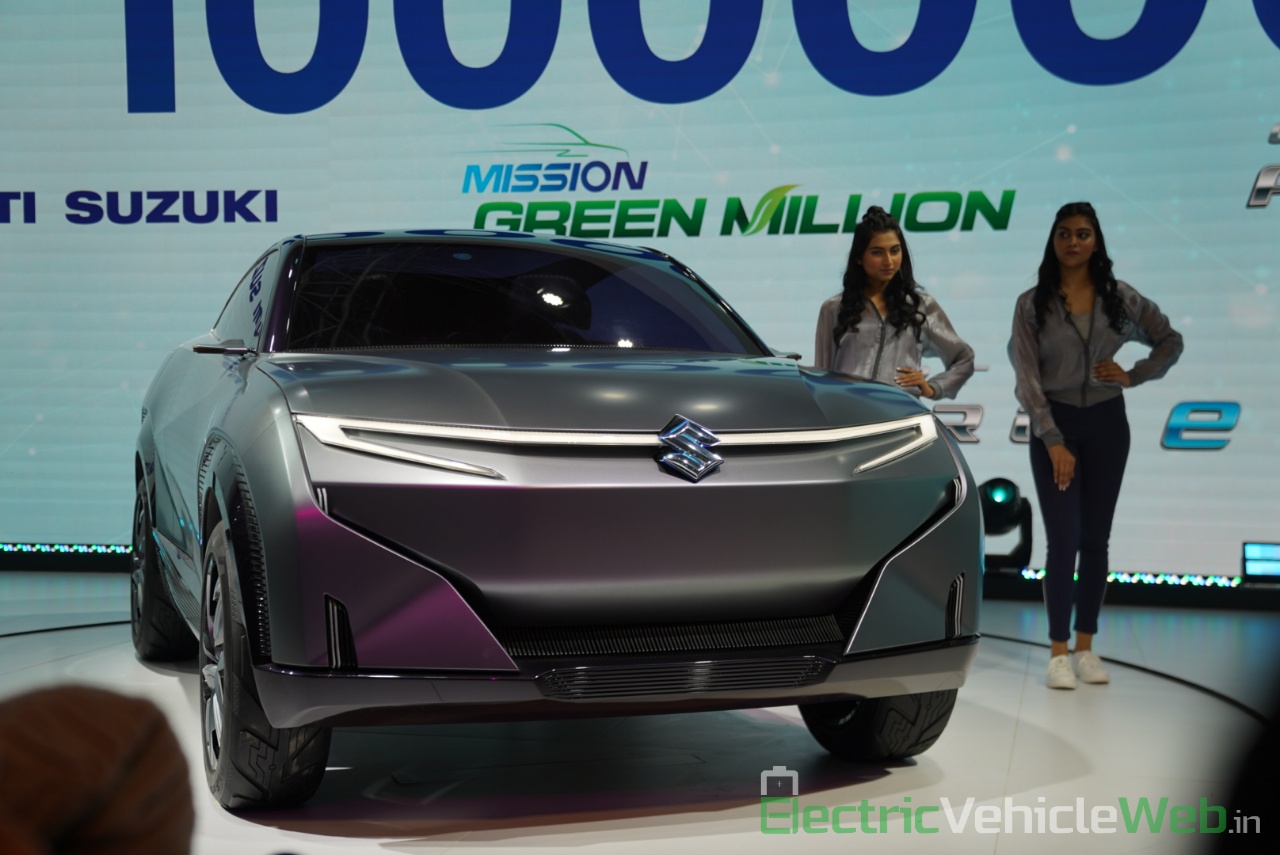
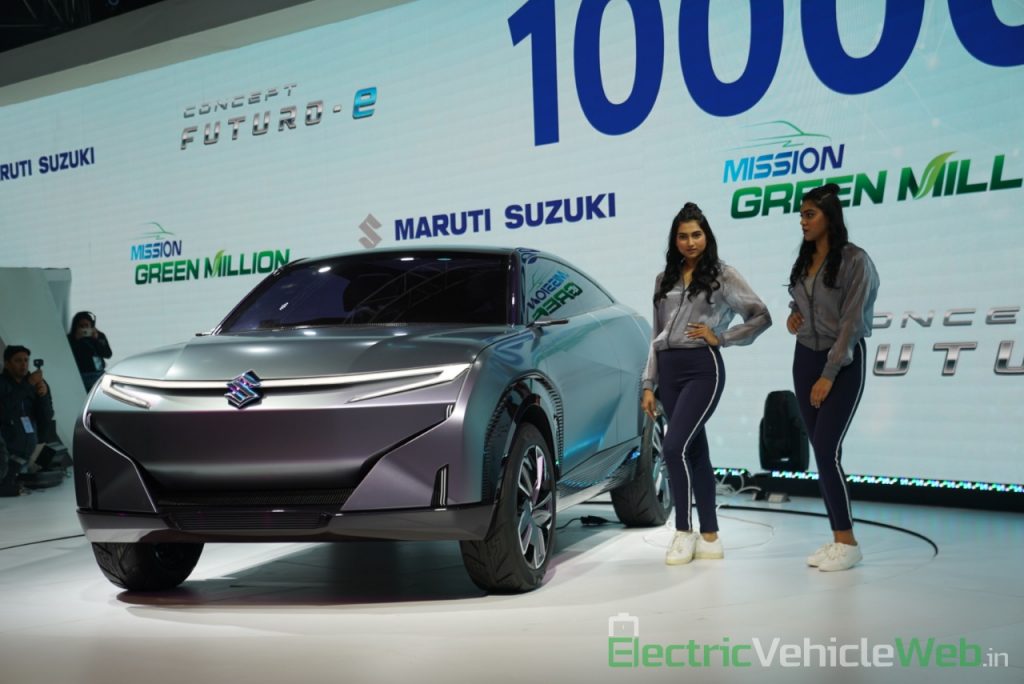
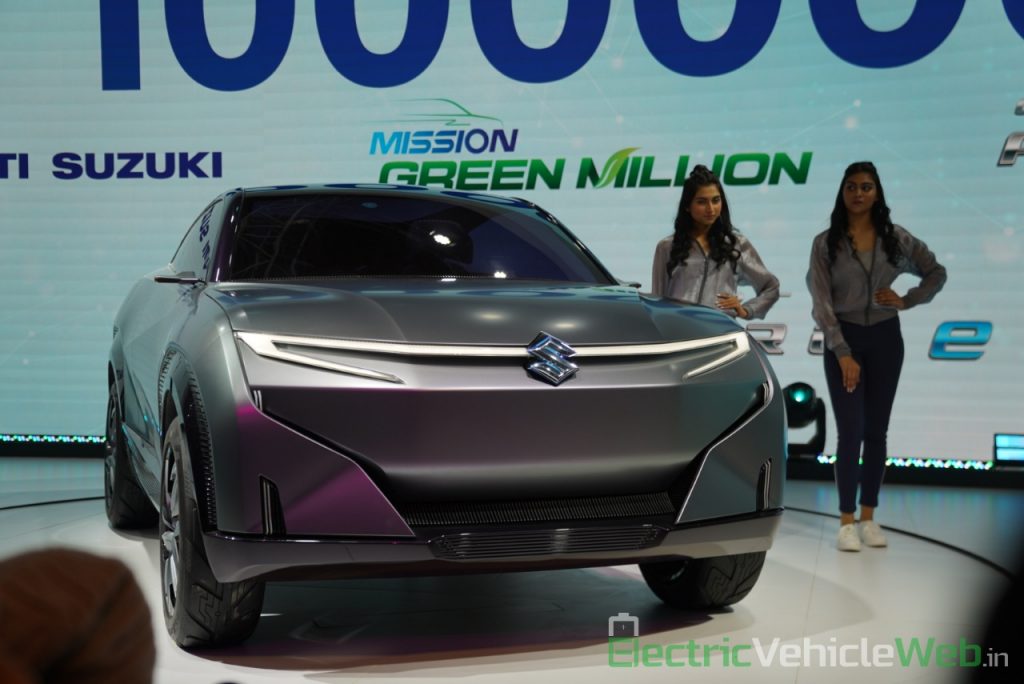
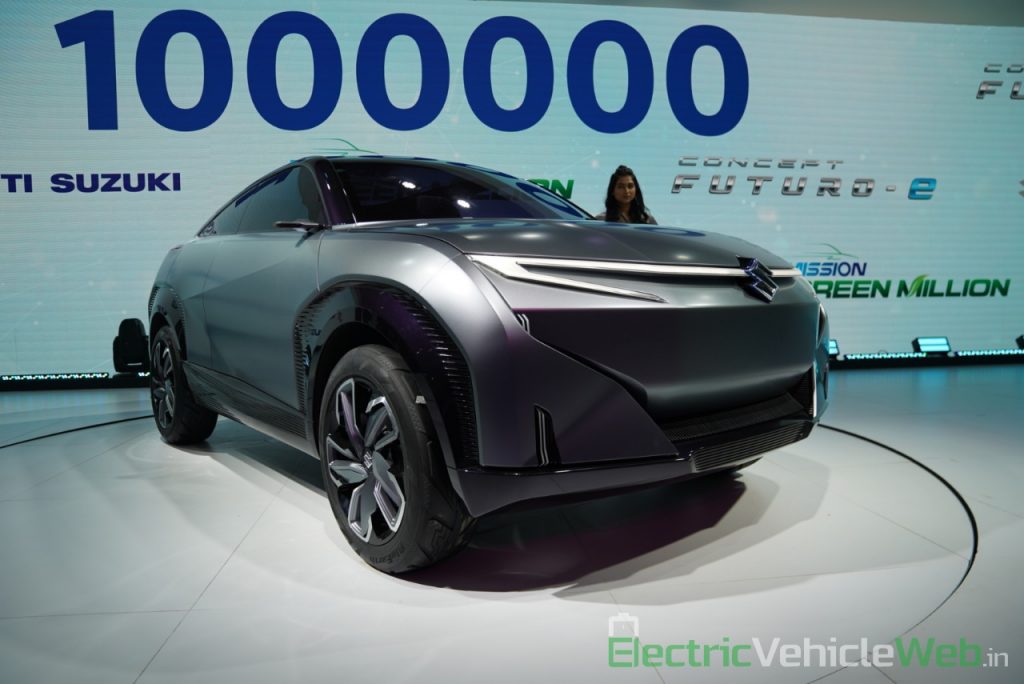
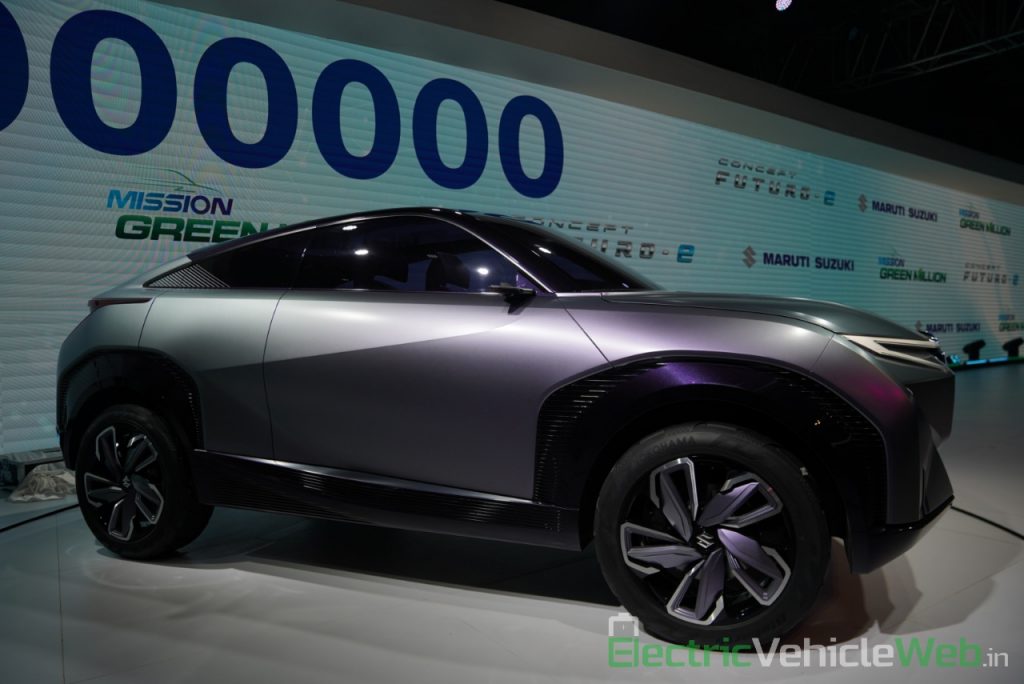


![Next-gen 2022 Suzuki Swift with mild-hybrid arriving next year – Report [Update]](https://electricvehicleweb.com/wp-content/uploads/2021/02/Next-gen-Suzuki-Swift-2022-rendering-350x220.jpg)
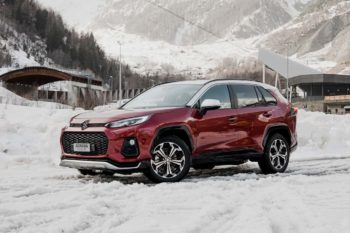
![EV specialist develops Maruti Dzire Electric with 250 km range [Video]](https://electricvehicleweb.com/wp-content/uploads/2021/01/Maruti-Dzire-EV-Electric-charging-350x263.jpg)